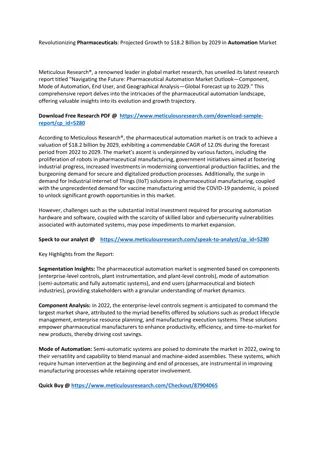The Future of Work: Mega-trends and Automation
Paolo Falco, a Labour Market Economist, discusses mega-trends shaping the future of work such as technology, globalisation, and ageing societies. The impact of the 4th industrial revolution on job automation is explored, highlighting tasks at risk and those less susceptible. The fallacy of technological determinism is addressed, along with societal acceptance of robots in various areas.
Download Presentation

Please find below an Image/Link to download the presentation.
The content on the website is provided AS IS for your information and personal use only. It may not be sold, licensed, or shared on other websites without obtaining consent from the author.If you encounter any issues during the download, it is possible that the publisher has removed the file from their server.
You are allowed to download the files provided on this website for personal or commercial use, subject to the condition that they are used lawfully. All files are the property of their respective owners.
The content on the website is provided AS IS for your information and personal use only. It may not be sold, licensed, or shared on other websites without obtaining consent from the author.
E N D
Presentation Transcript
THE FUTURE OF WORK Paolo Falco Labour Market Economist Skills and Employability Division Directorate for Employment, Labour and Social Affairs Foresight Centre of the Estonian Parliament Conference on The Future of Work Tallin, 11 April 2018
Mega-trends changing the world of work Changing: What jobs will be created How, where and by whom they are carried out Ageing Societies Globalisation Technology Digitalisation 2
The 3 mega-trends Technology is changing the workplace Estimated worldwide annual supply of industrial robots 300 Populations are ageing Old-age dependency ratio 65+/(15-64) OECD average '000 of units 200 100 0 2015 The world has become more integrated Share of business sector jobs sustained by consumers in foreign markets 60% 2050 40% 20% 0%
What can we expect from the 4th industrial revolution? Jobs with high and medium potential for automation Percentage of jobs with 70 % and between 50 % et 70 % of substitutable tasks 70 Automatable 60 50 40 30 20 10 0 Source: Survey of Adult Skills (PIAAC); Arntz et al (2016)
What can we expect from the 4th industrial revolution? Jobs with high and medium potential for automation Percentage of jobs with 70 % and between 50 % et 70 % of substitutable tasks Tasks that lower risk of automation: Presenting Influencing Reading books and/or professional publications Writing articles Using programming language Training others 70 Significant change in tasks Automatable 60 50 40 30 20 10 Tasks that increase risk of automation: Exchanging information Selling Using fingers or hands 0 Source: Arntz et al (2016), Table 3. Source: Survey of Adult Skills (PIAAC); Arntz et al (2016)
The fallacy of Technological Determinism In which areas is the application of robots most/least acceptable? 60 Areas of robots usage index 40 20 0 -20 -40 -60 -80 Source: Eurobarometer.
Technology or Globalisation? The labour m Industrial and Occupational Structure Globalisation Technology Digitalisation DE-INDUSTRIALISATION
The decline of the manufacturing sector Percentage change in total employment within industry for selected OECD countries Source: OECD (2017), OECD Employment Outlook 2017, forthcoming.
Technology or Globalisation? The labour m Industrial and Occupational Structure Globalisation Progresso Tecnologico DE-INDUSTRIALISATION JOB-POLARISATION
The labour market continues to polarise LM Polarisation, selected OECD countries by region, 1995 to 2015 Percentage point change in share of total employment Middle skill High skill Low skill 10 5 0 -5 -10 -15 Northern Europe Southern Europe Western Europe North America Total Japan Central Europe Source: OECD (2017), OECD Employment Outlook 2017, forthcoming.
Inequality is growing Gini (at disposable income, post taxes and transfers) United States 0.40 United Kingdom Italy France Germany 0.30 Norway 0.20
Technology or Globalisation? The labour m Industrial and Occupational Structure Globalisation Technology Digitalisation DE-INDUSTRIALISATION JOB-POLARISATION OECD Employment Outlook 2017: TECHNOLOGY PLAYS THE CLEAREST ROLE
The rise of the platform economy? Greater income, efficiency and flexibility? Less social protection and greater precarity? Greater risk for individuals who manage their jobs, protection and training?
The platform economy remains small (but may be growing fast) New and filled platform vacancies May 2016 to May 2017 28-day moving average, May 2016=100 3%5% 140 130 0.5% 1% 120 110 100 90 Mar-17 May-16 Jul-16 Jul-17 May-17 Jan-17 Nov-16 Sep-16 Sep-17 Source: K ssi, O. & Lehdonvirta, V. (2016), Online Labor Index.
We know very little about platform workers Earnings? Where? Who? What? Primary or supplementary? Choice?
Non-standard employment is not new OECD Average 18 16.7 16.5 16 14 11.24 12 10 8 6 4 2 0 Self-employment (% of total employment) Part-time employment (% of total employment) Temporary employment (% of all employees)
Are jobs becoming less stable? Change in average tenure, 2000-2015 Effect of population ageing Effect of decreasing job-stability within age groups Total Change in Tenure 2.5 2 1.5 1 0.5 0 -0.5 -1 -1.5 -2 -2.5 17
Key policy areas Social Protection Skills Labour Market Supporting conditions Regulation Collective Bargaining Activation
Do workers have the skills for the new jobs? Problem-solving skills in Technology-Rich Environments Percentage of the working-age population (aged 15/16-64) 100 Level 1 or below Level 2 Level 3 More advanced ICT and cognitive skills to evaluate problems and solutions 80 60 40 20 0 20 (57) (57)(62)(56)(64)(58)(54) (54) (56) (56)(48)(59) (56) (55)(46)(55)(50) (52) (49) (50) 40 60 Many workers lacking ICT skills 80 Few high-skilled workers No ICT skills or only basic skills to carry out simple tasks 100 POL KOR JPN AUT AUS DEU CAN FIN IRL USA NOR NLD Average SVK SWE CZE ENG / NIR DNK EST BEL (Fl) Source: OECD (2013), OECD Skills Outlook 2013: First Results from the Survey of Adult Skills , OECD Publishing.
Job-related training most in need get the least Percent of workforce in job-related education and training by level of proficiency in literacy Below level 1 Level 1 Level 2 Level 3 Level 4/5 100 80 60 40 20 0 Source: OECD (2013), OECD Skills Outlook 2013: First Results from the Survey of Adult Skills , OECD Publishing.
The future of work requires a change to how we think about social protection Statutory access to social protection for the self-employed Parental benefits Sickness benefits Accidents at work Unempl. benefits Old age Invalidity Finland Sweden Denmark Spain United Kingdom Germany Netherlands France Italy Source: Spasova et al. (2017).
The self-employed risk slipping through the (social safety) net The share of self-employed (15-64) in the EU at risk of not being entitled to unemployment benefits 54.5% The share of self-employed (15-64) in the EU at risk of not being entitled to sickness benefits 37.8% The share of self-employed women (15-49) in the EU at risk of not being entitled to maternity benefits 46.1% Source: EC (2016): Non-standard employment and access to social security benefits
Thank you Contact: Paolo.FALCO@oecd.org Read more about our work Follow us on Twitter: @OECD_Social Website: www.oecd.org/els/social Newsletter: www.oecd.org/els/newsletter























